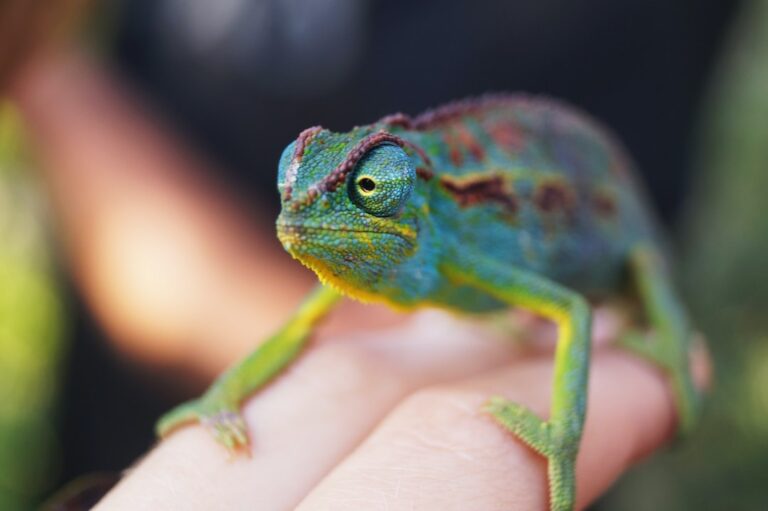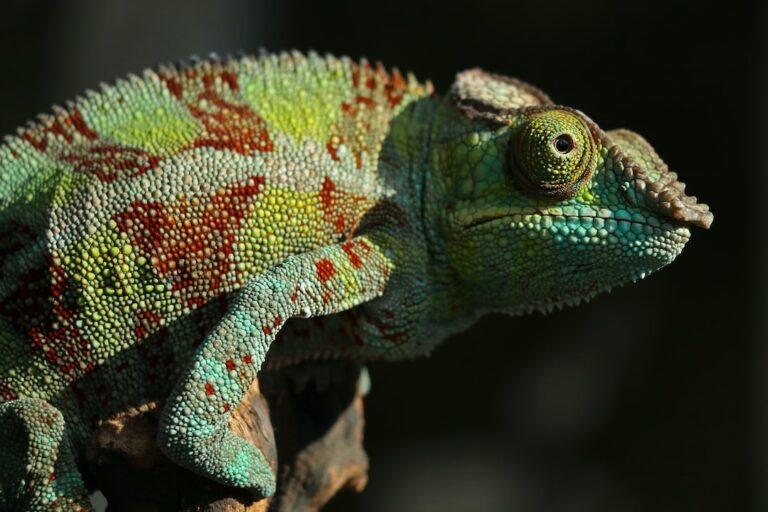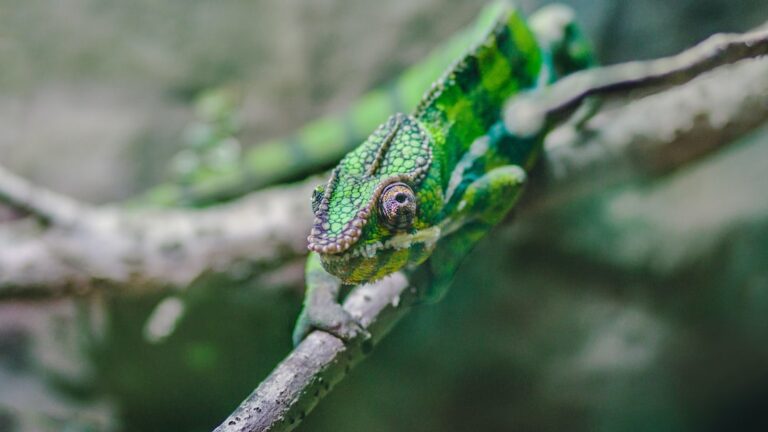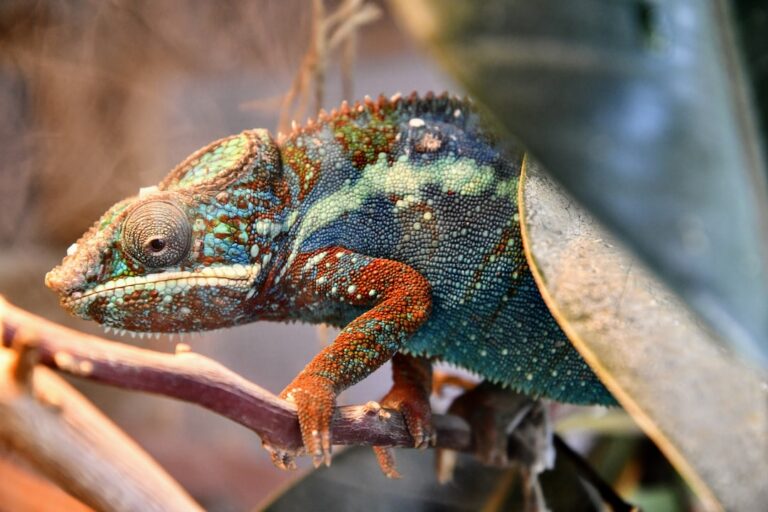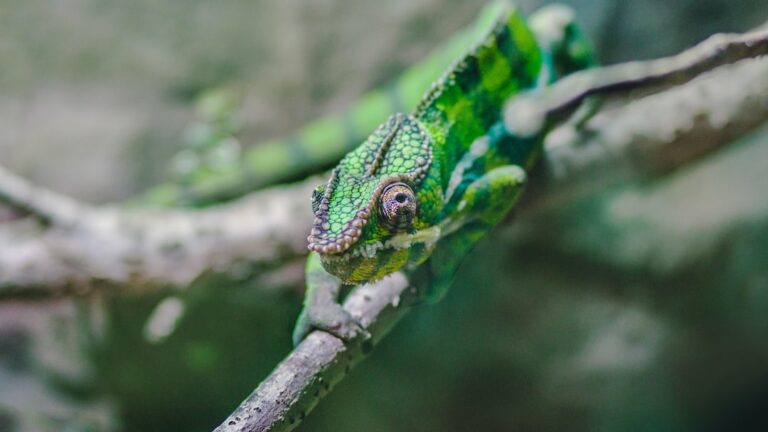Why Do Chameleons Lick Things?
Chameleons are fascinating creatures known for their ability to change color and blend into their surroundings. They belong to the family Chamaeleonidae and are native to Africa, Madagascar, and parts of southern Europe and Asia. Chameleons have unique characteristics that set them apart from other reptiles. They have a prehensile tail, independently moving eyes, and zygodactyl feet, which means they have two toes pointing forward and two pointing backward.
Chameleons are known for their slow movements and their ability to blend into their environment. They have specialized skin cells called chromatophores that contain pigments, allowing them to change color. This color change is not only for camouflage but also for communication and thermoregulation. Chameleons can change their color to express emotions, attract mates, or regulate their body temperature.
Table of Contents
Understanding chameleon tongue and its function
The chameleon’s tongue is one of its most remarkable features. It is long, muscular, and sticky, allowing the chameleon to catch prey from a distance. The tongue is attached to the front of the chameleon’s mouth and can be rapidly extended to capture insects or other small prey.
The chameleon’s tongue works through a combination of muscle contractions and the adhesive properties of its saliva. When the chameleon spots its prey, it focuses its eyes on the target and calculates the distance. It then rapidly extends its tongue towards the prey, wrapping it around the insect with lightning speed. The sticky saliva on the tongue helps to secure the prey, allowing the chameleon to retract its tongue back into its mouth.
What are the reasons behind chameleons licking things?
Chameleons are known to lick objects in their environment for various reasons. One reason is to gather information about their surroundings. By licking objects, chameleons can detect scents and taste chemicals present on the surface. This helps them identify potential food sources, predators, or even potential mates.
Another reason chameleons lick objects is for cleaning and grooming purposes. They use their tongues to remove dirt, debris, and shed skin from their bodies. Licking also helps them keep their eyes clean and free from any foreign particles.
Chameleons may also lick objects as a form of territorial marking. By leaving their scent on objects, they are able to establish their presence and deter other chameleons from entering their territory.
Do chameleons lick to hydrate themselves?
While chameleons do require water for hydration, licking is not their primary method of obtaining water. Chameleons have specialized adaptations that allow them to obtain water through other means. They have a unique ability to absorb water through their skin, which is known as dermal drinking. They can also drink water droplets from leaves or other surfaces using their mouth.
However, chameleons may occasionally lick objects that have moisture on them as a way to supplement their water intake. This behavior is more commonly observed in captive chameleons that may not have access to natural sources of water.
Proper hydration is crucial for the health and well-being of chameleons. Dehydration can lead to serious health issues and even death. It is important for chameleon owners to provide a clean and accessible source of water for their pets.
How does licking help chameleons in hunting and feeding?
Licking plays a crucial role in the hunting process for chameleons. As mentioned earlier, the chameleon’s tongue is long, muscular, and sticky, allowing it to catch prey from a distance. When a chameleon spots its prey, it uses its eyes to calculate the distance and then rapidly extends its tongue towards the target.
The sticky saliva on the chameleon’s tongue helps to secure the prey, allowing the chameleon to retract its tongue back into its mouth. The prey is then swallowed whole. The chameleon’s tongue is highly efficient in capturing fast-moving insects, making it a formidable predator.
Saliva also plays a role in the hunting process. It contains enzymes that help break down the prey’s exoskeleton, making it easier to digest. The saliva also contains antibacterial properties that help prevent infection from any potential pathogens present on the prey.
Can chameleons taste with their tongue?
Chameleons do have taste buds on their tongues, but their sense of taste is not as developed as other animals. They primarily use their tongues to gather information about their environment rather than for tasting food.
Chameleons have a specialized organ called the vomeronasal organ, also known as Jacobson’s organ, located in the roof of their mouth. This organ allows them to detect chemical signals and pheromones in the air or on objects. When a chameleon licks an object, it transfers chemicals to the vomeronasal organ, which helps them gather information about their surroundings.
However, it is important to note that chameleons rely more on their sense of sight and smell when it comes to finding food. Their tongues are primarily used for capturing prey rather than for tasting it.
What are the other uses of chameleon tongue besides licking?
Besides licking objects for various reasons, chameleons also use their tongues for other purposes. One such purpose is cleaning and grooming. Chameleons use their tongues to remove dirt, debris, and shed skin from their bodies. They also use their tongues to clean their eyes and keep them free from any foreign particles.
Chameleons may also use their tongues for communication purposes. They may flick their tongues as a warning or defensive behavior to deter potential threats. This behavior is often accompanied by other defensive displays, such as hissing or puffing up their bodies.
Do chameleons prefer certain types of surfaces to lick?
Chameleons do not have a preference for specific types of surfaces to lick. They will lick any object that they come into contact with, especially if it contains moisture or has an interesting scent. This behavior is part of their natural curiosity and exploration of their environment.
However, chameleons may be more inclined to lick objects that have moisture on them, such as leaves or branches after rain. This behavior may be a way for them to supplement their water intake, especially in drier environments.
Can licking be a sign of stress or illness in chameleons?
Excessive licking in chameleons can be a sign of stress or illness. Chameleons may engage in excessive licking when they are feeling anxious or uncomfortable in their environment. This behavior may be accompanied by other signs of stress, such as pacing, hiding, or loss of appetite.
Licking can also be a sign of illness in chameleons. Certain health conditions, such as mouth infections or respiratory issues, can cause chameleons to excessively lick their mouths or other parts of their bodies. If a chameleon is exhibiting excessive licking along with other abnormal behaviors or symptoms, it is important to consult a veterinarian for a proper diagnosis and treatment.
Tips for maintaining a healthy environment for chameleons to prevent excessive licking.
To maintain a healthy environment for chameleons and prevent excessive licking, there are several important factors to consider:
1. Proper hydration: Ensure that your chameleon has access to clean and fresh water at all times. Mist the enclosure regularly to provide humidity and encourage dermal drinking.
2. Proper nutrition: Feed your chameleon a balanced diet consisting of a variety of live insects, such as crickets, mealworms, and waxworms. Dust the insects with a calcium supplement to ensure proper nutrition.
3. Temperature and lighting: Chameleons require specific temperature and lighting conditions to thrive. Provide a basking spot with a heat lamp and UVB lighting to mimic their natural habitat.
4. Enclosure setup: Create a suitable enclosure for your chameleon with plenty of climbing branches, foliage, and hiding spots. This will provide them with opportunities for exercise, exploration, and mental stimulation.
5. Reduce stress: Minimize stress in your chameleon’s environment by avoiding sudden loud noises, excessive handling, or overcrowding in the enclosure. Provide a quiet and calm space for your chameleon to feel safe and secure.
By following these tips and providing a healthy environment for your chameleon, you can help prevent excessive licking and ensure the overall well-being of your pet.
If you’re interested in reptile behavior, you might also want to check out this article on Why Do Chameleons Dig? Chameleons are known for their unique ability to change color and blend into their surroundings, but did you know that they also have a penchant for digging? This article explores the reasons behind this behavior and provides insights into the fascinating world of chameleons.


